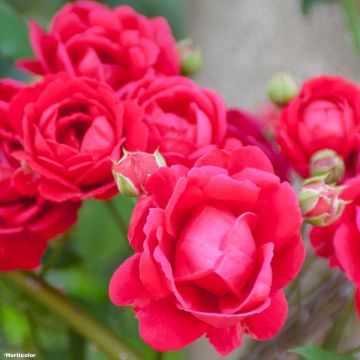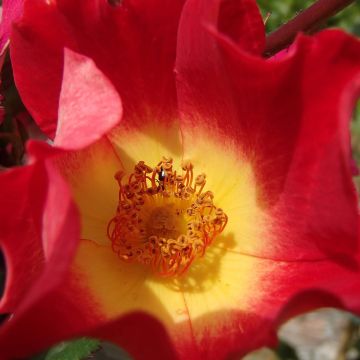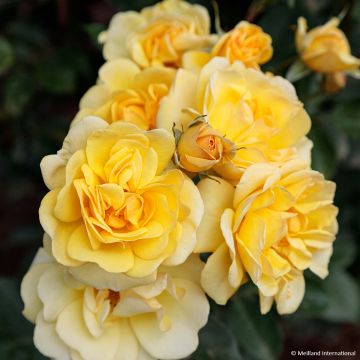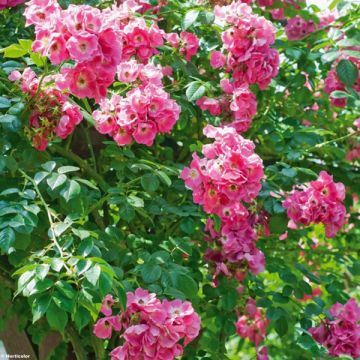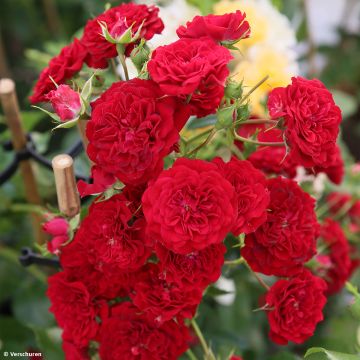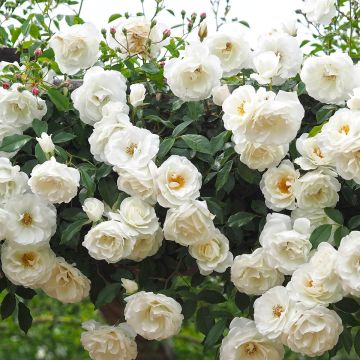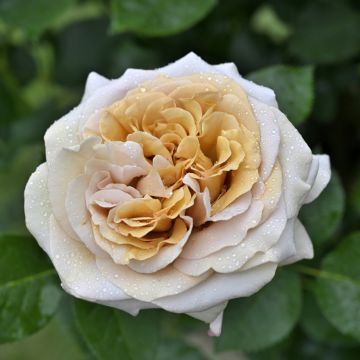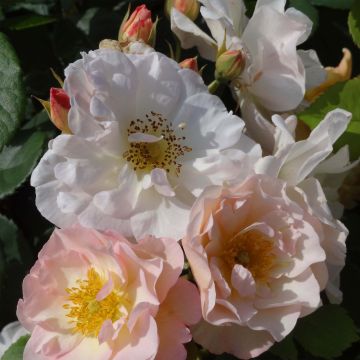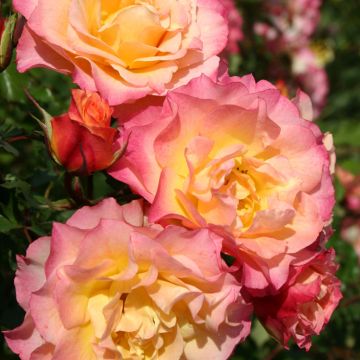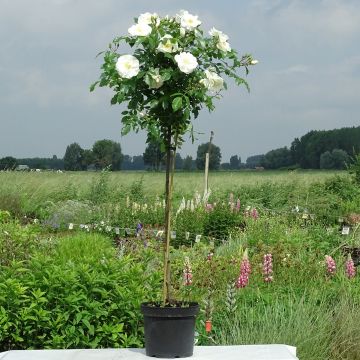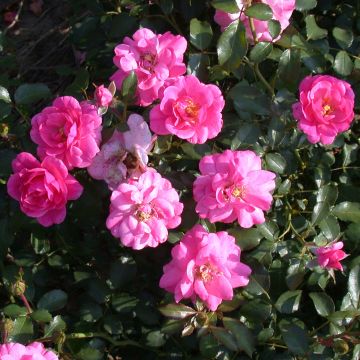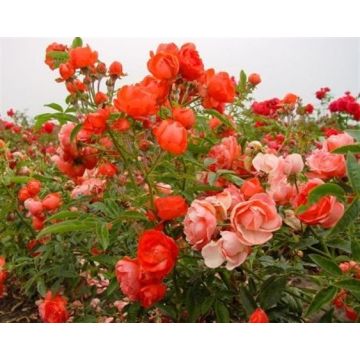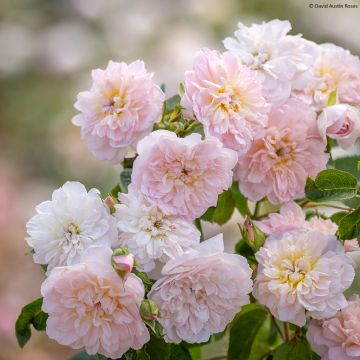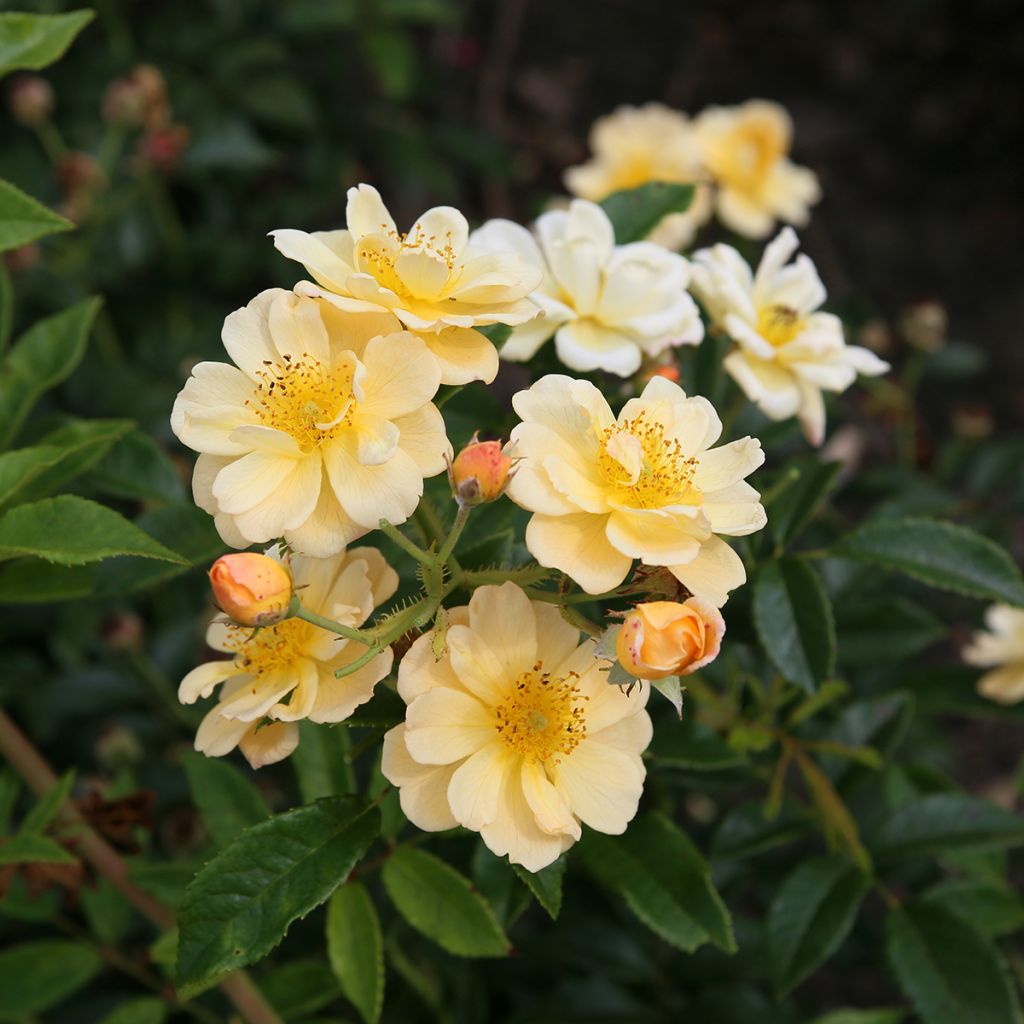

Rosier grimpant Siluetta Sunny
Rosa 'Sunny Siluetta' - Climbing Rose
Rosa Sunny Siluetta® 'KORsilu05'
KORsilu05
This item cannot be shipped to the selected country
Delivery charge from €5.90
Delivery charge from €5.90
More information
Schedule delivery date,
and select date in basket
This plant carries a 24 months recovery warranty
More information
We guarantee the quality of our plants for a full growing cycle, and will replace at our expense any plant that fails to recover under normal climatic and planting conditions.
From €5.90 for pickup delivery and €6.90 for home delivery
Express home delivery from €8.90.
From €5.90 for pickup delivery and €6.90 for home delivery
Express home delivery from €8.90.
Does this plant fit my garden?
Set up your Plantfit profile →
Description
The 'Siluetta Sunny' Rose is another small climbing rose from the Siluetta series, a line of roses developed in Germany by Kordes for their compact growth as they reach a maximum height of 2 meters (7 feet). They are very floriferous and covered in small flowers for months; their floribundity is matched only by their robustness and disease resistance. Sunny offers us the sunshine of its semi-double flowers with visible yellow stamens, which open in lemon yellow and evolve into butter yellow. Its numerous clusters of lightly scented flowers bloom on perfectly healthy satin green foliage.
The climbing rose 'Sunny Siluetta' or 'KORsilu05' is a highly recurrent climbing rose that appeared on the European market in 2019. Vigorous and flexible, it has thorny stems, reaching 1.80 meters (6 feet) in height with a spread of 70 cm (28in). Its green and satin foliage is exceptionally healthy and perfectly highlights the pretty clusters of 4 cm (2in) flowers in two shades of gentle and golden yellow. It blooms almost continuously, from May to September, abundantly, provided it is not lacking in water. Its flowers are semi-double, with a rather fluffy structure. Their fresh and light fragrance falls into the category of wild roses.
Siluetta roses are suitable for elegantly covering fences, pergolas, or wall trellises. They allow for modest yet sumptuous decorations throughout the summer. They require very little maintenance except for regular watering in summer during periods of high heat and prolonged drought. Mix or combine them with easy-going large-flowered clematis like 'Broughton Star'. They are good companions for paniculate phlox, delphiniums, foxgloves, catmints, and tall gypsophila. This 'Sunny' variety also thrives in large pots, in partial shade, in small gardens, on balconies or terraces, or even as a hedge. In a yellow colour scheme, it can be accompanied by the flowering of a 'Mandarin' honeysuckle or a Trachelospermum asiaticum Chili & Vanilla.
Report an error about the product description
Rosa 'Sunny Siluetta' - Climbing Rose in pictures
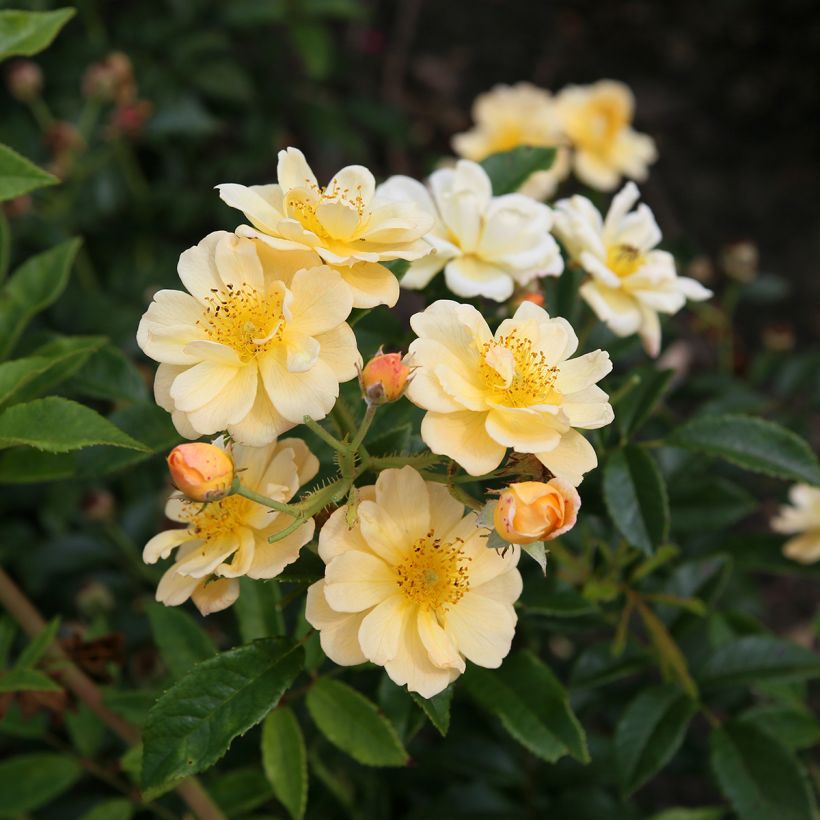

Plant habit
Flowering
Foliage
Botanical data
Rosa
Sunny Siluetta® 'KORsilu05'
Rosaceae
KORsilu05
Cultivar or hybrid
Other Climbing Roses
Planting and care
Plant the 'Siluetta Sunny' rose from November to March in ordinary, well-worked, and well-drained soil. Roses prefer clayey soils over light soils. In case of sandy, compact, or dry soil during summer, it's best to add compost or well-rotted manure at the bottom of the planting hole. However, this rose doesn't do well in waterlogged soils during winter. Place it in a sunny location, preferably in partial shade. Roses require a lot of nutrients, so a specific fertiliser will be helpful at the beginning of growth and regularly throughout the flowering season. To stimulate reblooming, it's necessary to remove faded flowers regularly. In late winter, prune the stems to roughly one-quarter of their length (from 4 to 6 buds from the base of the stem). Always prune above an outward-facing bud to encourage bushy growth and prevent branches from intertwining in the centre.
Roses may appear stained or unsightly at the end of summer. However, it is a natural phenomenon that doesn't harm their development.
Planting period
Intended location
Care
-
, onOrder confirmed
Reply from on Promesse de fleurs
Roses by purpose
Haven't found what you were looking for?
Hardiness is the lowest winter temperature a plant can endure without suffering serious damage or even dying. However, hardiness is affected by location (a sheltered area, such as a patio), protection (winter cover) and soil type (hardiness is improved by well-drained soil).

Photo Sharing Terms & Conditions
In order to encourage gardeners to interact and share their experiences, Promesse de fleurs offers various media enabling content to be uploaded onto its Site - in particular via the ‘Photo sharing’ module.
The User agrees to refrain from:
- Posting any content that is illegal, prejudicial, insulting, racist, inciteful to hatred, revisionist, contrary to public decency, that infringes on privacy or on the privacy rights of third parties, in particular the publicity rights of persons and goods, intellectual property rights, or the right to privacy.
- Submitting content on behalf of a third party;
- Impersonate the identity of a third party and/or publish any personal information about a third party;
In general, the User undertakes to refrain from any unethical behaviour.
All Content (in particular text, comments, files, images, photos, videos, creative works, etc.), which may be subject to property or intellectual property rights, image or other private rights, shall remain the property of the User, subject to the limited rights granted by the terms of the licence granted by Promesse de fleurs as stated below. Users are at liberty to publish or not to publish such Content on the Site, notably via the ‘Photo Sharing’ facility, and accept that this Content shall be made public and freely accessible, notably on the Internet.
Users further acknowledge, undertake to have ,and guarantee that they hold all necessary rights and permissions to publish such material on the Site, in particular with regard to the legislation in force pertaining to any privacy, property, intellectual property, image, or contractual rights, or rights of any other nature. By publishing such Content on the Site, Users acknowledge accepting full liability as publishers of the Content within the meaning of the law, and grant Promesse de fleurs, free of charge, an inclusive, worldwide licence for the said Content for the entire duration of its publication, including all reproduction, representation, up/downloading, displaying, performing, transmission, and storage rights.
Users also grant permission for their name to be linked to the Content and accept that this link may not always be made available.
By engaging in posting material, Users consent to their Content becoming automatically accessible on the Internet, in particular on other sites and/or blogs and/or web pages of the Promesse de fleurs site, including in particular social pages and the Promesse de fleurs catalogue.
Users may secure the removal of entrusted content free of charge by issuing a simple request via our contact form.
The flowering period indicated on our website applies to countries and regions located in USDA zone 8 (France, the United Kingdom, Ireland, the Netherlands, etc.)
It will vary according to where you live:
- In zones 9 to 10 (Italy, Spain, Greece, etc.), flowering will occur about 2 to 4 weeks earlier.
- In zones 6 to 7 (Germany, Poland, Slovenia, and lower mountainous regions), flowering will be delayed by 2 to 3 weeks.
- In zone 5 (Central Europe, Scandinavia), blooming will be delayed by 3 to 5 weeks.
In temperate climates, pruning of spring-flowering shrubs (forsythia, spireas, etc.) should be done just after flowering.
Pruning of summer-flowering shrubs (Indian Lilac, Perovskia, etc.) can be done in winter or spring.
In cold regions as well as with frost-sensitive plants, avoid pruning too early when severe frosts may still occur.
The planting period indicated on our website applies to countries and regions located in USDA zone 8 (France, United Kingdom, Ireland, Netherlands).
It will vary according to where you live:
- In Mediterranean zones (Marseille, Madrid, Milan, etc.), autumn and winter are the best planting periods.
- In continental zones (Strasbourg, Munich, Vienna, etc.), delay planting by 2 to 3 weeks in spring and bring it forward by 2 to 4 weeks in autumn.
- In mountainous regions (the Alps, Pyrenees, Carpathians, etc.), it is best to plant in late spring (May-June) or late summer (August-September).
The harvesting period indicated on our website applies to countries and regions in USDA zone 8 (France, England, Ireland, the Netherlands).
In colder areas (Scandinavia, Poland, Austria...) fruit and vegetable harvests are likely to be delayed by 3-4 weeks.
In warmer areas (Italy, Spain, Greece, etc.), harvesting will probably take place earlier, depending on weather conditions.
The sowing periods indicated on our website apply to countries and regions within USDA Zone 8 (France, UK, Ireland, Netherlands).
In colder areas (Scandinavia, Poland, Austria...), delay any outdoor sowing by 3-4 weeks, or sow under glass.
In warmer climes (Italy, Spain, Greece, etc.), bring outdoor sowing forward by a few weeks.


































